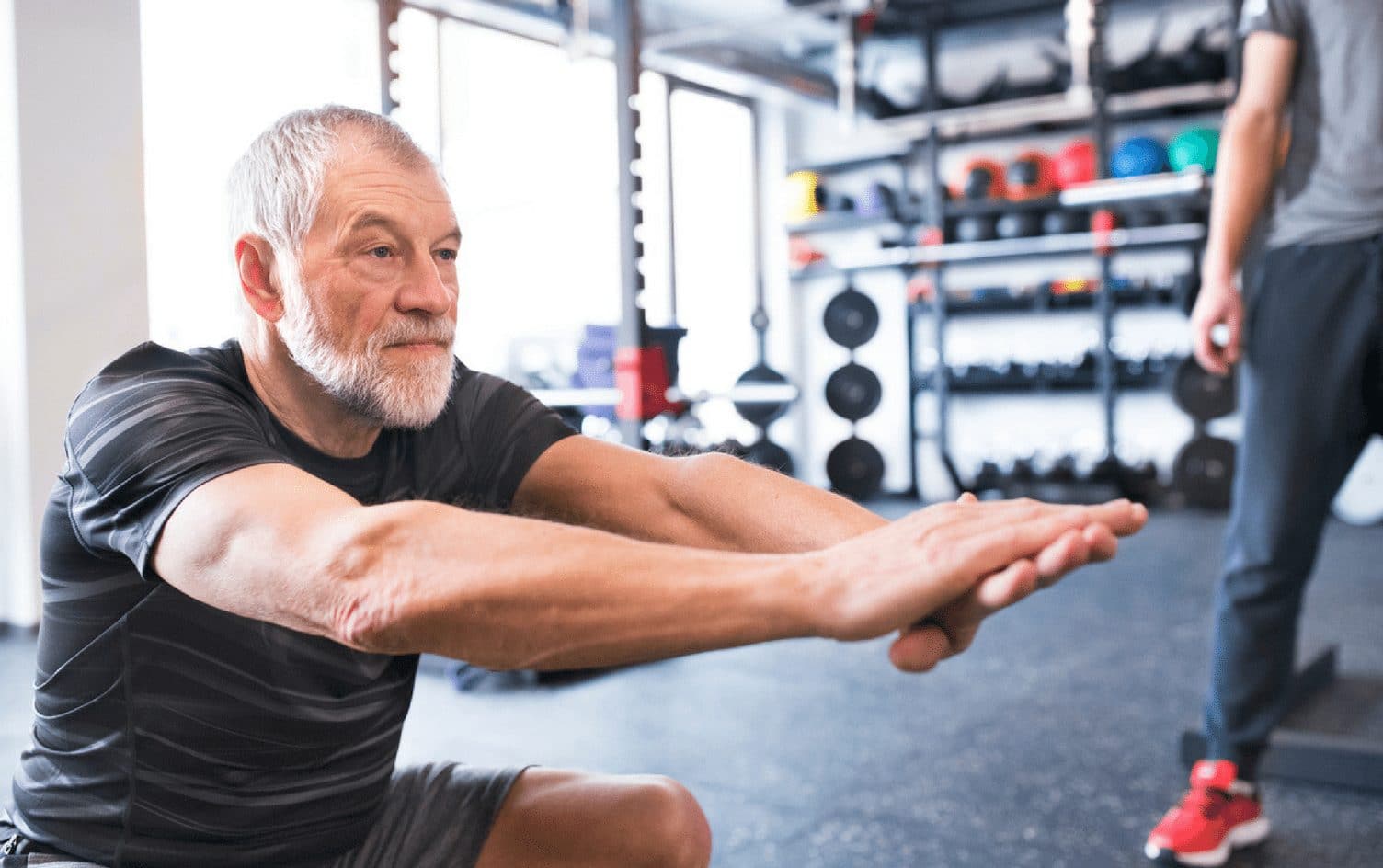Parkinson’s disease is a progressive neurological condition that can cause tremors, muscle rigidity and balance and mobility issues — all symptoms that appear to be at odds with maintaining a regular exercise program. But new research shows those diagnosed with Parkinson’s disease should embrace exercise — and the more vigorous their workouts, the better.
A 2017 study published in JAMA Neurology followed 128 participants between the ages of 40 and 80 who were newly diagnosed with Parkinson’s disease and not taking any medication to manage their symptoms. After participating in a workout program three times per week for six months, data found slower disease progression among those who exercised at high intensity — defined as 80–85% of maximum heart rate — than those who engaged in moderate-intensity exercise (with heart rates at 60–65% of maximum) or didn’t exercise at all.
“Everyone benefits from endurance exercise [and] there is now evidence that vigorous exercise slows down the rate at which Parkinson’s disease progresses,” says Daniel M. Corcos, PhD, professor of physical therapy and human movement sciences at Northwestern University Feinberg School of Medicine.
THE BRAIN-EXERCISE CONNECTION
Although the researchers didn’t explore the reasons exercise slowed disease progression, it could be linked to increased blood flow to the brain, according to James Beck, PhD, chief science officer at the Parkinson’s Foundation.
“The dopamine neurons [in the brain] help control movement and people with Parkinson’s disease don’t produce enough dopamine,” explains Beck. “Exercise releases chemicals in the brain, including dopamine, which could help the brain compensate for the disease.”
To wit, medications prescribed for Parkinson’s disease were designed to replace dopamine. The medications cannot cure the disease but boosting dopamine levels helps alleviate the symptoms — and exercise might have a similar effect says Beck.
A combination of medication and exercise is often recommended to those living with Parkinson’s disease. In addition to the JAMA Neurology research showing exercise is linked to slower disease progression, multiple studies have found regular workouts help ease symptoms such as muscle rigidity and stiffness. In fact, a 2014 JAMA Neurology study showed a combination of low-intensity treadmill exercise, stretching and resistance training helped improve gait speed, muscle strength and motor skills.
“Exercise doesn’t alleviate the disease but it does help with symptoms, so it’s not a panacea but it will make life better,” Beck says.
READ MORE > ONE THING CAN OPTIMIZE HIIT WORKOUT
Some symptoms, especially in advanced stages of the disease, might make vigorous workouts more challenging so Corcos believes those with Parkinson’s disease should talk to their doctors about safety considerations before starting an exercise program.
And, while the latest research examined the impact of high-intensity exercise on those in the early stages of the disease, Corcos adds, “There is no reason to think those people with later-stage Parkinson’s disease will not also benefit from vigorous exercise.”
The earlier you intervene, he says, the more likely you are to prevent the progression of the disease.




